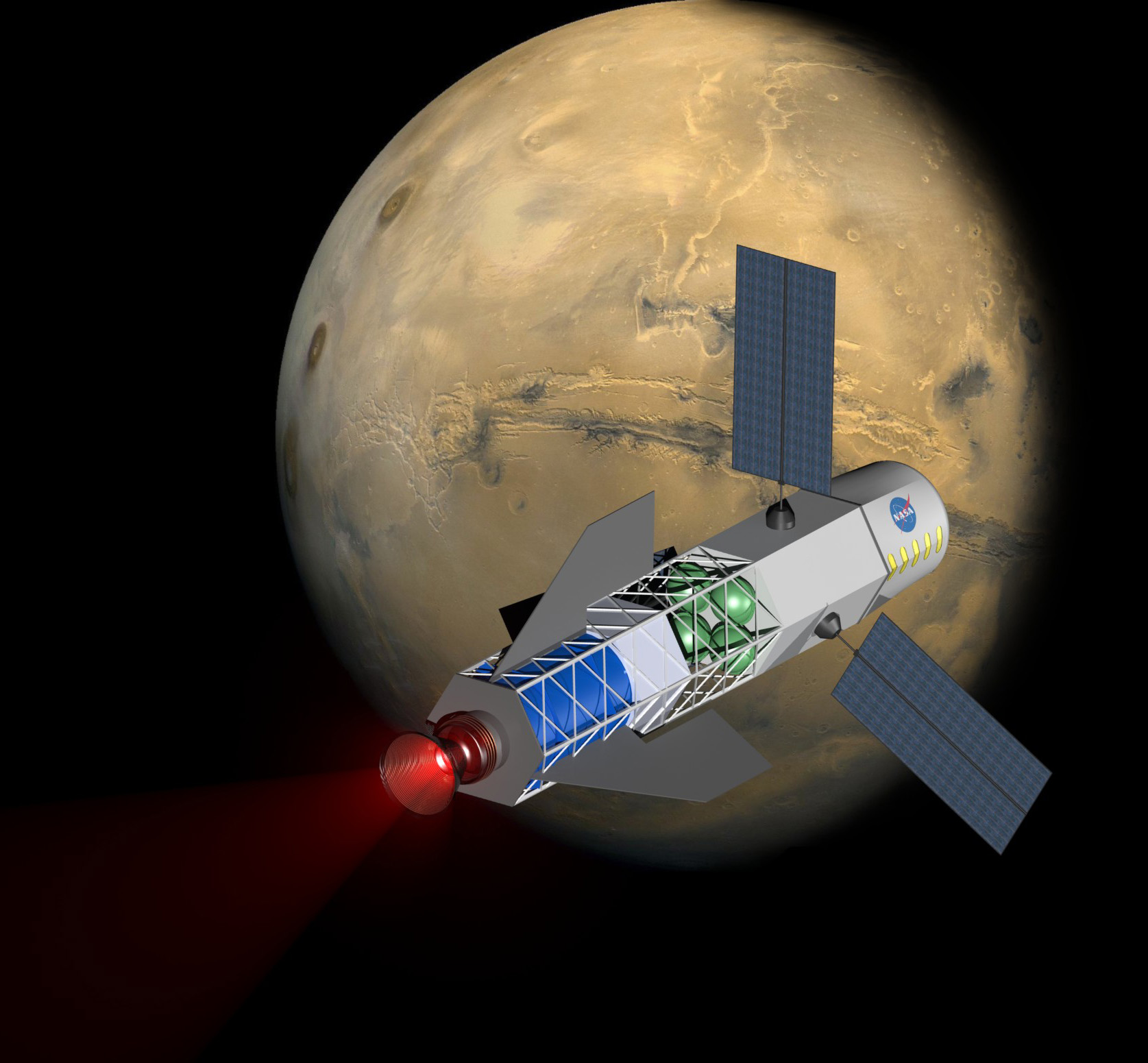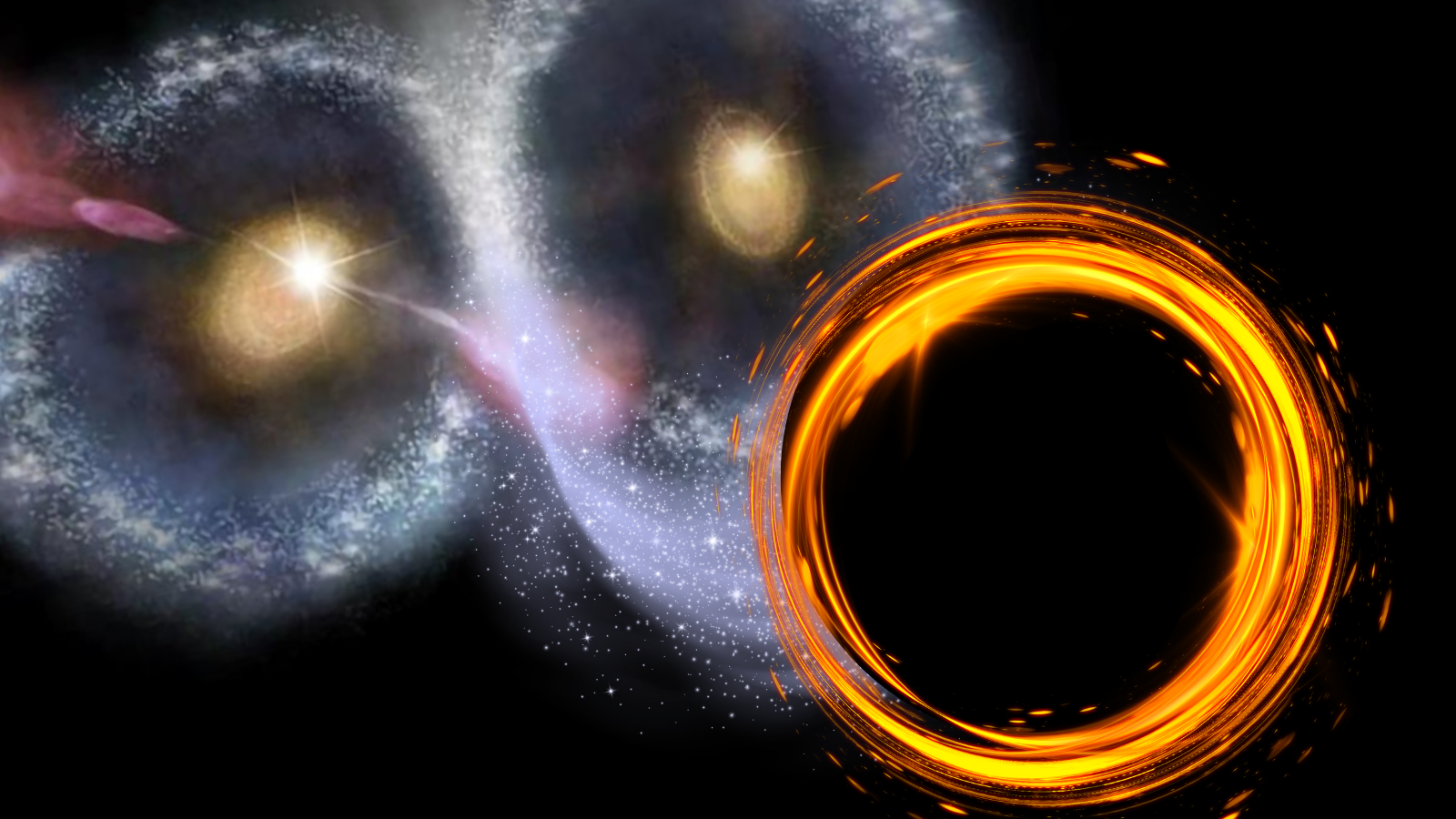Will Mini Fusion Rockets Provide Spaceflight's Next Big Leap?

Fusion-powered rockets that are only the size of a few refrigerators could one day help propel spacecraft at high speeds to nearby planets or even other stars, a NASA-funded spaceflight company says.
Another use for such fusion rockets is to deflect asteroids that might strike Earth and to build manned bases on the moon and Mars, the researchers say.
Rockets fly by hurling materials known as propellants away from them. Conventional rockets that rely on chemical reactions are not very efficient when it comes to how much thrust they generate, given the amount of propellant they carry, which has led rocket scientists to explore a variety of alternatives over the years. [Superfast Spacecraft Propulsion Concepts (Images)]
An option now used in spacecraft is the ion drive, which generates thrust by using electricity to accelerate electrically charged ion propellants. Ion drives are far more efficient than chemical rockets, but are limited by the amount of electricity they can harvest via solar panels or generate using radioactive materials.
Instead of chemical rockets or ion drives, scientists have also suggested using fusion rockets propelled by the same nuclear reactions that power stars. These rockets would not only be efficient, but also generate vast amounts of electricity.
However, so far, no one has built a fusion reactor that generates more energy than it consumes. Moreover, the fusion reactors that are under development are huge, making them difficult to hoist into space.
But now, researchers funded by NASA are developing small fusion rockets.
Breaking space news, the latest updates on rocket launches, skywatching events and more!
"It's technology that enables really interesting robotic and human missions to Mars and Pluto, and it is also potentially a way of getting into interstellar space," said Michael Paluszek, president of Princeton Satellite Systems in Plainsboro, New Jersey.
The large fusion reactors under development today, such as the International Thermonuclear Experimental Reactor (ITER), usually strive to generate hundreds of megawatts of power. In contrast, Paluszek and his colleagues at Princeton Satellite Systems are designing reactors meant to produce only a dozen megawatts or so. This humbler goal results in a smaller, lighter reactor that is easier to build and launch into space "for practical robotic and human missions," Paluszek said.
In addition, these small fusion reactors are much cheaper than larger devices. Paluszek noted that, whereas modern fusion experiments might cost $20 billion, a prototype fusion rocket the researchers plan to develop should cost just $20 million. So far, they have received three NASA grants to fund the project, he said.
The aim for the fusion drives is to get about 1 kilowatt of power per 2.2 lbs. (1 kilogram) of mass. A 10-megawatt fusion rocket would therefore weigh about 11 tons (10 metric tons).
"It would probably be 1.5 meters [4.9 feet] in diameter and 4 to 8 meters [13 to 26 feet] long," Paluszek said.
Nuclear fusion requires extremely high temperatures and pressures to force atoms to fuse, a process that converts some of the mass of the atoms into energy. The fusion reactors that Princeton Satellite Systems is developing uses low-frequency radio waves to heat a mix of deuterium and helium-3, and magnetic fields to confine the resulting plasma in a ring. (Deuterium is made of hydrogen atoms that each have an extra neutron; helium-3 is made of helium atoms, each of which is missing a neutron; and plasma is the state of matter found in stars, lightning bolts and neon lights.)
As this plasma rotates in a ring, some of it can spiral out and get directed from the fusion rocket's nozzle for thrust. "We can get very high exhaust velocities of up to about 25,000 kilometers per second [55.9 million mph]," Paluszek said.
The large amounts of thrust this fusion rocket may deliver compared to its mass could enable very fast spacecraft. For instance, whereas round-trip crewed missions to Mars are estimated to take more than two years using current technology, the researchers estimated that six 5-megawatt fusion rockets could accomplish such missions in 310 days. This extra speed would reduce the risks of radiation that astronauts might experience from the sun or deep space, as well as dramatically cut the amount of food, water and other supplies they would need to bring with them.
In addition, the fusion reactors could also help generate ample electricity for scientific instruments and communications devices. For instance, whereas NASA's New Horizons mission took more than nine years to get to Pluto and had little more than 200 watts of power to work with once it arrived, broadcasting about 1,000 bits of data back per second, a 1-megawatt fusion rocket could get a robotic mission to Pluto in four years, supply 500 kilowatts of power and broadcast more than 1 million bits of data back per second, Paluszek said. Such a mission could also carry a lander to Pluto and power it by beaming down energy, he added.
"With the amount of power fusion rockets can provide, you can think of science that can't be done now with other technologies, such as powering a lander to drill through the ice on Jupiter's moon Europa," Paluszek said.
A 10-megawatt fusion rocket could also deflect an asteroid about 525 feet (160 m) in diameter coming at Earth, spending about 200 days to travel there and 23 days nudging it off course, Paluszek said. Fusion rockets could even enable an interstellar voyage to the nearest star system, Alpha Centauri, although the trip might take 500 to 700 years, he said. (Alpha Centauri lies about 4.3 light-years from the sun.) [Gallery: Visions of Interstellar Starship Travel]
Previous research suggested this kind of fusion rocket in the 1960s, but the designs proposed for them would not stably confine the plasmas, Paluszek said. About 10 years ago, reactor designer Sam Cohen figured out a magnetic-field design "that could make stable plasmas," Paluszek explained.
One drawback of the kind of nuclear reactor that Princeton Satellite Systems is developing is that radio waves do not penetrate deeply into plasma. "We're limited to something like 1 meter [3.3 feet] in diameter," Paluszek said. To generate large amounts of power with this strategy, the researchers have to rely on multiple reactors.
Another pitfall is that, while this fusion reactor generates less deadly neutron radiation than most fusion reactors under development, it still does produce some neutrons, as well as X-rays. "Radiation shielding is key," Paluszek said.
In addition, helium-3 is rare on Earth. Still, it is possible to generate helium-3 using nuclear reactors, Paluszek said.
Princeton Satellite Systems is not alone in pursuing small fusion reactors. For instance, Paluszek noted that Helion Energy in Redmond, Washington, also intends to fuse deuterium and helium-3, while Tri Alpha Energy in Foothill Ranch, California, aims to fuse boron and protons.
"Fusion can enable new and exciting science missions that are too expensive and difficult to do with today's technology," Paluszek said.
The researchers have not yet demonstrated fusion with their device, but aim to do so by 2019 to 2020. Paluszek detailed his company's research June 3 at The Dawn of Private Space Science Symposium in New York.
Editor's Note: A previous version of this article stated that each fusion reactor could be up to 10 meters (33 feet) in diameter, and that a 1-megawatt reactor could supply 2 milllion watts of electric power. The actual maximum diameter is about 1 meter (3.3 feet), and a 1-MW reactor could provide 500 kilowatts.
Follow Charles Q. Choi on Twitter @cqchoi. Follow us @Spacedotcom, Facebook and Google+. Original article Space.com.

Charles Q. Choi is a contributing writer for Space.com and Live Science. He covers all things human origins and astronomy as well as physics, animals and general science topics. Charles has a Master of Arts degree from the University of Missouri-Columbia, School of Journalism and a Bachelor of Arts degree from the University of South Florida. Charles has visited every continent on Earth, drinking rancid yak butter tea in Lhasa, snorkeling with sea lions in the Galapagos and even climbing an iceberg in Antarctica. Visit him at http://www.sciwriter.us
